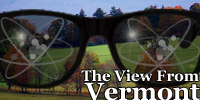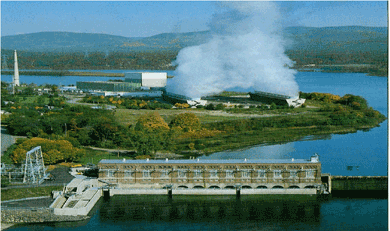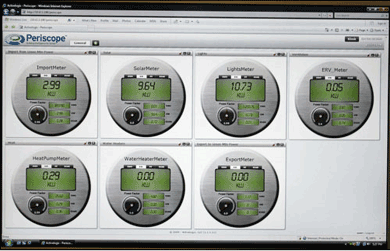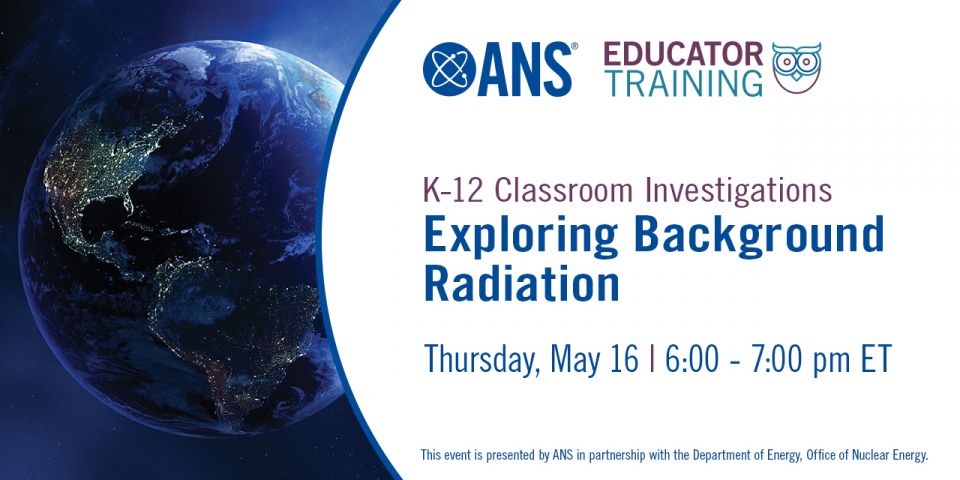Zero or net-zero?
 It's not as much fun as you might think to stand in front of an auditorium of young people, speaking about energy, and knowing that they simply do not believe you. No, it wasn't that they didn't believe me about nuclear safety-although that may also have been the case-it's that they didn't believe me about the role of renewables. Specifically, they didn't understand the difference between a net-zero energy facility and a zero-use energy facility.
It's not as much fun as you might think to stand in front of an auditorium of young people, speaking about energy, and knowing that they simply do not believe you. No, it wasn't that they didn't believe me about nuclear safety-although that may also have been the case-it's that they didn't believe me about the role of renewables. Specifically, they didn't understand the difference between a net-zero energy facility and a zero-use energy facility.
The background
About two weeks ago, I spoke at an assembly at Putney School, an "alternative" private high-school attended both by boarding students and day students. The school is located in Putney, Vt., the hometown of the state's governor, Peter Shumlin. Most of the faculty and students at the school oppose the relicensing of the Vermont Yankee nuclear power plant, so it was a tough crowd.
The crowd was made even tougher by the fact that the president of the Vermont Public Interest Research Group, an antinuclear organization, had spoken to the assembly the week before. He had refused to debate me in an assembly, as Howard Shaffer described in his recent View from Vermont post on this blog.
My problem at Putney, however, wasn't with what I said about nuclear power. Instead, the problem was about what I said about renewables.
Renewables
Whenever I discuss renewables, I say that I am in favor of them (which is true), but that they have several major drawbacks.
Renewables take up a lot of space-I usually illustrate this with a picture of Vermont Yankee, which is located next to Vernon Dam. In my picture, both facilities are visible:
I point out that Vermont Yankee makes 620 megawatts of electricity for 90 percent of the time, and that Vernon Dam makes 34 MW for 50 percent of the time. To replace Vermont Yankee with hydro power, there would have to be 20 to 30 dams the size of Vernon Dam. This would be clearly impossible to do in Vermont. (Vernon Dam is the one of the largest local dams on the Connecticut River, which is the largest river in this area.)
I also point out that solar photovoltaic and wind energy are "non-dispatchable" renewables. That means that these technologies start when they want to start, and they quit when they want to quit. No human can command the sun and the wind. Germany and Denmark have invested heavily in renewables, but both countries have found that their electricity grids becomes destabilized if they try to put more than 20 percent of these non-dispatchable renewables on them. With this constraint, the question becomes: What do we want for the other 80 percent of our electricity needs? Fossil, big hydro, or nuclear?
Many of the students at Putney School seem to think that we can have 100-percent solar-after all, they have a solar-powered fieldhouse.
The Putney fieldhouse
Putney School is justifiably proud of its net-zero fieldhouse. This super-insulated facility, with a solar orchard outside, cost more than $5 million, according to the "fundraising" tab on the fieldhouse Web site.
The Putney students simply didn't believe me when I spoke about the 20-percent non-dispatchable renewables. The students didn't understand the net-zero concept. I think it is important for nuclear power that people understand net-metering and net-zero.
Net-zero and the ghost batteries of Putney School
The Putney fieldhouse makes more energy than it uses when the sun is shining brightly. It sells the excess energy to the grid. When the sun is not shining, it buys energy from the grid, but buys only the amount it has sold before. In its interactions with the grid, the fieldhouse is net-zero in electricity use. (Or, at least, designed to be net-zero.)
When I talked about the limits of renewables, however, I received the following questions:
"Our field house is 100-percent solar! How can you say we can only use 20-percent solar?"
"There's a village in Spain that is 100-percent solar! I read about it. That 20 percent makes no sense at all."
I felt truly uncomfortable standing in front of a large auditorium explaining that their terrific fieldhouse (and the village in Spain) are net-zero, not zero electricity use. The grid, with its baseload and dispatchable power, is backing up the solar. That fieldhouse couldn't operate day and night without the grid standing behind it.
As I spoke, I could feel a wave of hostility moving toward me, and there was little I could do against it, except to keep telling the truth.
Later, at lunch, the physics teacher thanked me for my explanation of net-zero during the assembly. He told me that many students at Putney think that there is a bank of batteries under the floor of the fieldhouse, even though in fact there is no such thing. Still, the person who gave us the fieldhouse tour told us that "now we are standing above the batteries in the basement." If I didn't know any better, I would have thought he was serious. The tour of the fieldhouse occurred, unfortunately, after I gave my talk.
How's net-zero working?
I wanted to know how the fieldhouse was working, and it was not easy to find out. I didn't blame the students for being confused about the whole business.
For example, if you take the virtual tour at the Putney Fieldhouse site, it shows a bank of readouts in the fieldhouse that show energy use:
In the actual fieldhouse, however, those readouts are not working. There are two other ways to find out the information, but you have to look for it.
I logged into the Energy Use tab using "student" as username and password (as instructed). I saw a set of readouts, but the information on the site was not very clear to me. I had better luck visiting the Web site of Maclay Architects, designers of the Putney fieldhouse. I logged into Putney Fieldhouse information on the architect's site-and once again signed in as "student-student" (link is near the bottom of the page). In this case, I reached a readout with clearer labeling. Two electricity usage readings are "Import from Grid at 75,000 kWh" and "Export to Grid at 55,000 kWh". Net zero?
Conclusion: For energy choices, people must know the facts, and sometimes it is hard to find them. Solar facilities are usually connected to the grid. The grid itself cannot be 100-percent solar or intermittent power, although any facility can be net 100-percent solar, with luck. I wish the Putney students knew that there are no batteries in the basement, and that the grid is the backup.
If you think talking about nuclear is hard, try talking about solar!
____________________________________________________
Meredith Angwin is the founder of Carnot Communications, which helps firms to communicate technical matters. She specialized in mineral chemistry as a graduate student at the University of Chicago. Later, she became a project manager in the geothermal group at the Electric Power Research Institute (EPRI). Then she moved to nuclear energy, becoming a project manager in the EPRI nuclear division. She is an inventor on several patents. Angwin serves as a commissioner in the Hartford Energy Commission, Hartford, Vt.
Angwin is a long-time member of the American Nuclear Society and coordinator of the Energy Education Project. She is a frequent contributor to the ANS Nuclear Cafe.












